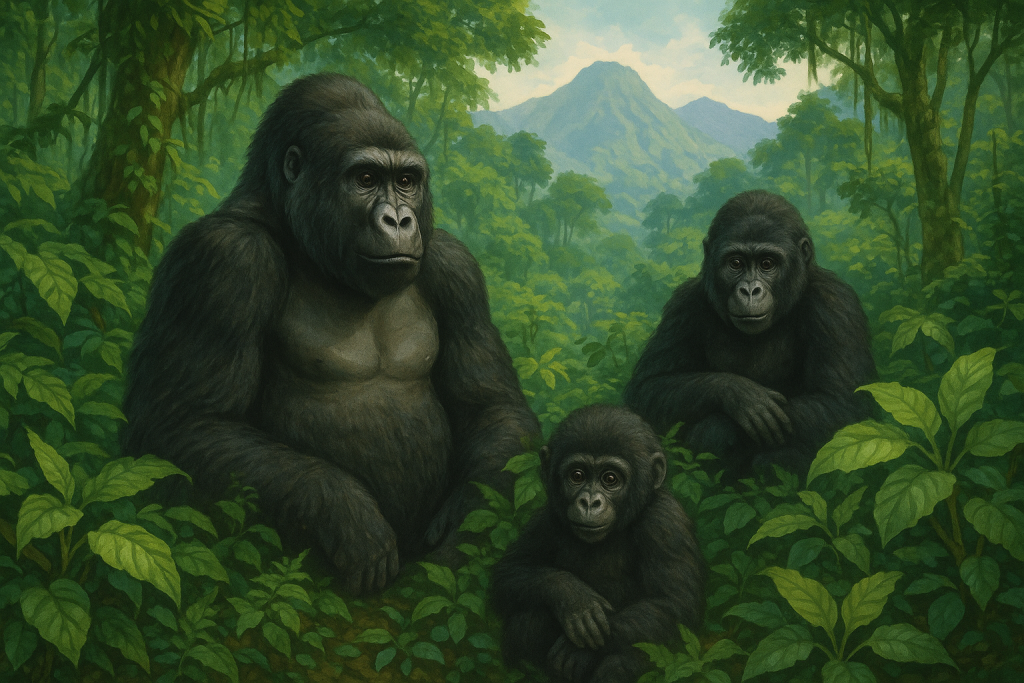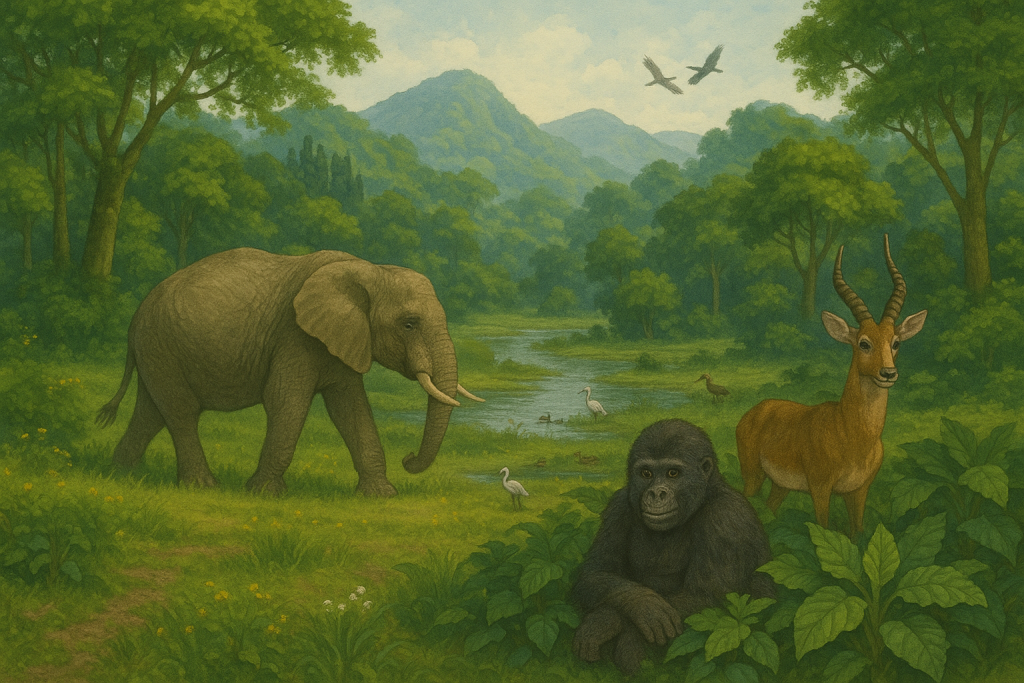A new count of the mountain gorillas in Uganda’s Bwindi Impenetrable Forest has started, in move to protect these endangered animals.
Led by the Greater Virunga Transboundary Collaboration (GVTC) and supported by various conservation groups, the 2025 Bwindi-Sarambwe population survey aims to provide a solid estimate of the mountain gorilla (Gorilla beringei beringei) population. This count will also help evaluate the health of the ecosystem and the gorillas’ condition.
The launch took place at the International Gorilla Conservation Programme (IGCP) offices in the Ruhija area, which is in the eastern part of the forest. According to the IGCP Director Wellard Makambo, this census is essential for understanding how conservation efforts are making a difference.
“This census is not just about counting gorillas. It helps us understand their social structures, where they are located, and how they behave so we can improve our protection strategies,” says Makambo.
The survey will take place in the Bwindi-Sarambwe area, one of the world’s only two natural habitats for mountain gorillas. Scientists, rangers, and park authorities will work together on this project, trekking through the forest to find gorilla nests and collecting poop samples for genetic study.

Beyond Gorillas: Understanding Biodiversity
While the primary focus is on the mountain gorillas, the census will provide helpful information about other wildlife and the park’s environment.
For example, it will, for the first time, specifically count the chimpanzee population living in the Bwindi-Sarambwe ecosystem.
Dr. James Musinguzi, Executive Director of the Uganda Wildlife Authority (UWA), says that this effort will give valuable information about other large mammals and the ecological conditions in the area.
“This census will help us understand the status of other wildlife and the overall health of the environment. This is crucial for planning long-term conservation,” notes Dr. Musinguzi.
For the first time, chimpanzees in the Bwindi-Sarambwe region will also be counted in this year’s census.
James Byamukama, Executive Director of the Jane Goodall Institute Uganda, praises this inclusion.
“Counting chimpanzees is a big step for primate conservation. It will help us tackle habitat threats and create solutions for saving multiple species,” stresses Byamukama.
Speaking at the same occasion, Dr. Andrew Sseguya, the GVTC Executive Secretary, emphasized the need for teamwork and scientific accuracy in this project.
A Team Effort for Conservation
The 2025 census involves multiple organizations working together, highlighting the importance of regional cooperation. The IGCP, along with groups like Conservation International, Fauna & Flora, and WWF, leads the project together with many scientific and conservation organizations.
Nelson Guma, Chief Park Warden for Bwindi-Mgahinga Conservation Area, notes that the census results will help in planning future efforts to manage wildlife sustainably.
“This information will allow us to review how well our current strategies are working and adjust as needed,” says Guma.
Rwanda is also participating in this initiative and Irene Murerwa, Chief Tourism Officer at the Rwanda Development Board, applauds the partnership.
“This level of cooperation is impressive. If we keep this going, our conservation and ecotourism sectors will benefit greatly,” notes Murerwa.

A Species on the Rise but Still at Risk
In the last count done in 2018, 459 mountain gorillas were estimated to live in 36 social groups, with 16 solitary ones. Adding findings from the 2015 Virunga census, the total global population of mountain gorillas came to about 1,063.
These results helped move the mountain gorilla’s status from “Critically Endangered” to “Endangered” on the IUCN Red List of Threatened Species, which is a hopeful sign of conservation success.
However, experts warn that ongoing care is needed. The species still faces habitat loss, disease, and climate change threats.
The census is funded by various organizations, including the Max Planck Institute for Evolutionary Anthropology, the Dian Fossey Gorilla Fund, and several others. These groups bring expertise in research, veterinary care, genetics, and community involvement.
The final results of the census are expected in 2026.



